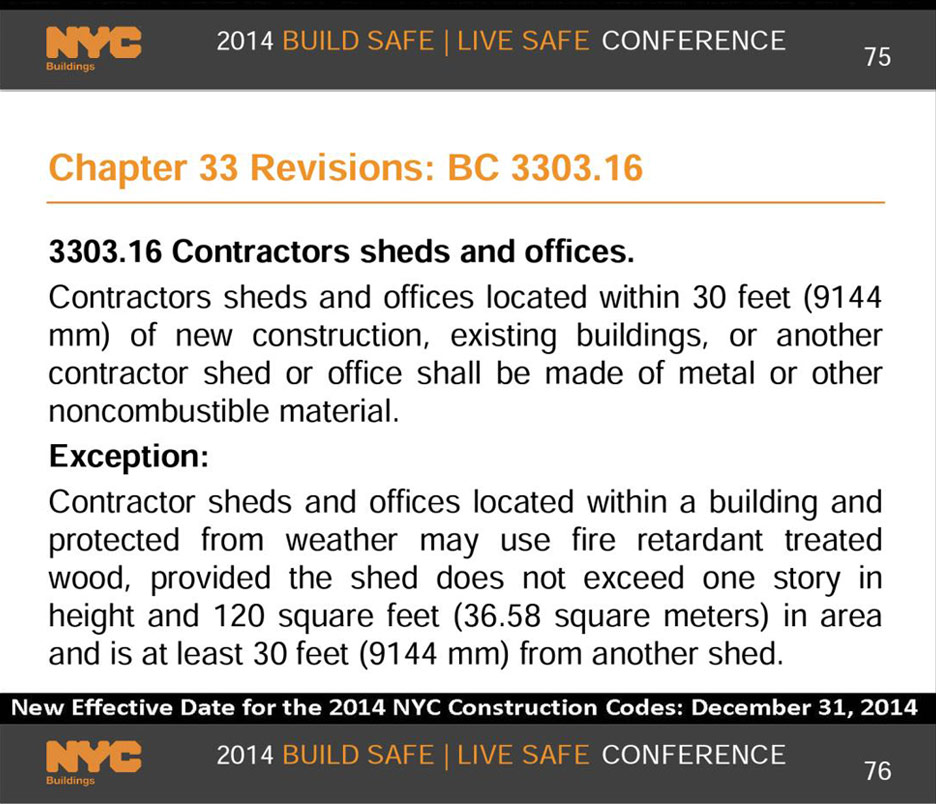
A knock-down, fire-rated shanty was covered with Sherwin Williams Flame Control Coating and a sprinkler system was used to extinguish the fire. Although the sprinkler system was successful, this particular method would not be feasible on a construction site due to a lack of temporary water sources.
The Catch A Smoker and Fit Pro fire suppressions systems saw successful results in another knock-down, fire-rated shanty.
In attendance were representatives from the New York City Department of Buildings, including Christopher M. Santulli, P.E., Acting Assistant Commissioner of Engineering & Safety Operations and Eugene J. Cocoran, Deputy Commissioner, Regulatory Policy and Enforcement. Chief Thomas Jensen and Battalion Chief Thomas Piggott. FDNY Bureau of Fire Prevention, represented FDNY for the test. Members of the FDNY Fire Academy, Randall’s Island, were available to aid in properly executing the shanty burn.
The New York Fire Safety Academy (NYFSA) provides educational programs for construction industry personnel on fire prevention and fire safety in order to eliminate fires on jobsites and prepare personnel properly in the event of a fire.
NYFSA collaborates with construction managers, the FDNY, the Department of Buildings, and the BTEA to develop the most effective programs. NYFSA also works to research new areas and establish best practices in fire safety and prevention in construction.


